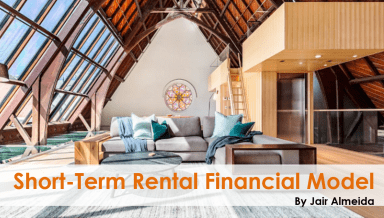Short Term Rental Financial Model (ArBnB, VRBO and Others)
The financial model for short-term rental is a comprehensive tool designed to help individuals and businesses evaluate the profitability of short-term rentals.
Further information
Best practice to provide users with a comprehensive tool to evaluate the profitability of short-term rental properties. The financial model is designed to be flexible, customizable, and adaptable to individual needs, allowing users to input property-related details such as value, loan-to-value ratio, and renovation costs and set up revenue and expense assumptions based on the property's unique characteristics.
This financial model applies best to individuals or businesses interested in evaluating short-term rental properties' profitability. The model is suitable for use in a variety of scenarios, including:
Prospective property buyers: Individuals or businesses considering the purchase of a property for short term rental purposes can use our financial model to evaluate the potential profitability of the investment.
Existing property owners: Owners of existing short-term rental properties can use our model to optimize their current operations, evaluate the impact of changing market conditions, and identify opportunities to improve profitability.
Property managers: Property management companies that manage short-term rental properties for clients can use our model to provide clients with detailed financial analyses, helping them make informed decisions about their investments
While being a comprehensive tool for evaluating the profitability of short-term rental properties, there are certain conditions for which it may not apply ideally. These include:
Long-term rental properties: Our financial model is designed specifically for short-term rental properties and may not be suitable for evaluating the profitability of long-term rental properties.
Unique or highly specialized properties: Properties with unique features or highly specialized uses may not fit within the assumptions and parameters of our model, making it difficult to evaluate their profitability accurately.
Properties in highly volatile or uncertain markets: Our financial model is designed to reflect actual market conditions, but highly volatile or uncertain markets may not be well-suited for analysis using our model.


















